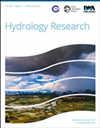Flash flood susceptibility mapping based on catchments using an improved Blending machine learning approach
IF 2.4
4区 环境科学与生态学
Q2 Environmental Science
引用次数: 1
Abstract
Flash floods are a frequent and highly destructive natural hazard in China. In order to prevent and manage these disasters, it is crucial for decision-makers to create GIS-based flash flood susceptibility maps. In this study, we present an improved Blending approach, RF-Blending (Reserve Feature Blending), which differs from the Blending approach in that it preserves the original feature dataset during meta-learner training. Our objectives were to demonstrate the performance improvement of the RF-Blending approach and to produce flash flood susceptibility maps for all catchments in Jiangxi Province using the RF-Blending approach. The Blending approach employs a double-layer structure consisting of support vector machine (SVM), K-nearest neighbor (KNN), and random forest (RF) as base learners for level-0, and the output of level-0 is utilized as the meta-feature dataset for the meta-learner in level-1, which is logistic regression (LR). RF-Blending employs the output of level-0 along with the original feature dataset for meta-learner training. To develop flood susceptibility maps, we utilized these approaches in conjunction with historical flash flood points and catchment-based factors. Our results indicate that the RF-Blending approach outperformed the other approaches. These can significantly aid catchment-based flash flood susceptibility mapping and assist managers in controlling and remediating induced damages.基于改进混合机器学习方法的流域山洪易感性映射
在中国,山洪暴发是一种频繁发生且具有高度破坏性的自然灾害。为了预防和管理这些灾害,决策者创建基于gis的山洪易感性图至关重要。在本研究中,我们提出了一种改进的混合方法,RF-Blending (Reserve Feature Blending),它与混合方法的不同之处在于,它在元学习器训练期间保留了原始特征数据集。我们的目标是证明rf混合方法的性能改进,并使用rf混合方法为江西省所有流域制作山洪易感性图。混合方法采用支持向量机(SVM)、k近邻(KNN)和随机森林(RF)组成的双层结构作为0级的基础学习器,将0级的输出作为1级元学习器的元特征数据集,即逻辑回归(LR)。RF-Blending将level-0的输出与原始特征数据集一起用于元学习器训练。为了开发洪水易感性图,我们将这些方法与历史暴洪点和基于流域的因素结合使用。我们的结果表明,射频混合方法优于其他方法。这些可以显著地帮助基于流域的山洪易感性地图绘制,并协助管理者控制和补救造成的损害。
本文章由计算机程序翻译,如有差异,请以英文原文为准。
求助全文
约1分钟内获得全文
求助全文
来源期刊

Hydrology Research
Environmental Science-Water Science and Technology
CiteScore
5.30
自引率
7.40%
发文量
70
审稿时长
17 weeks
期刊介绍:
Hydrology Research provides international coverage on all aspects of hydrology in its widest sense, and welcomes the submission of papers from across the subject. While emphasis is placed on studies of the hydrological cycle, the Journal also covers the physics and chemistry of water. Hydrology Research is intended to be a link between basic hydrological research and the practical application of scientific results within the broad field of water management.
 求助内容:
求助内容: 应助结果提醒方式:
应助结果提醒方式:


